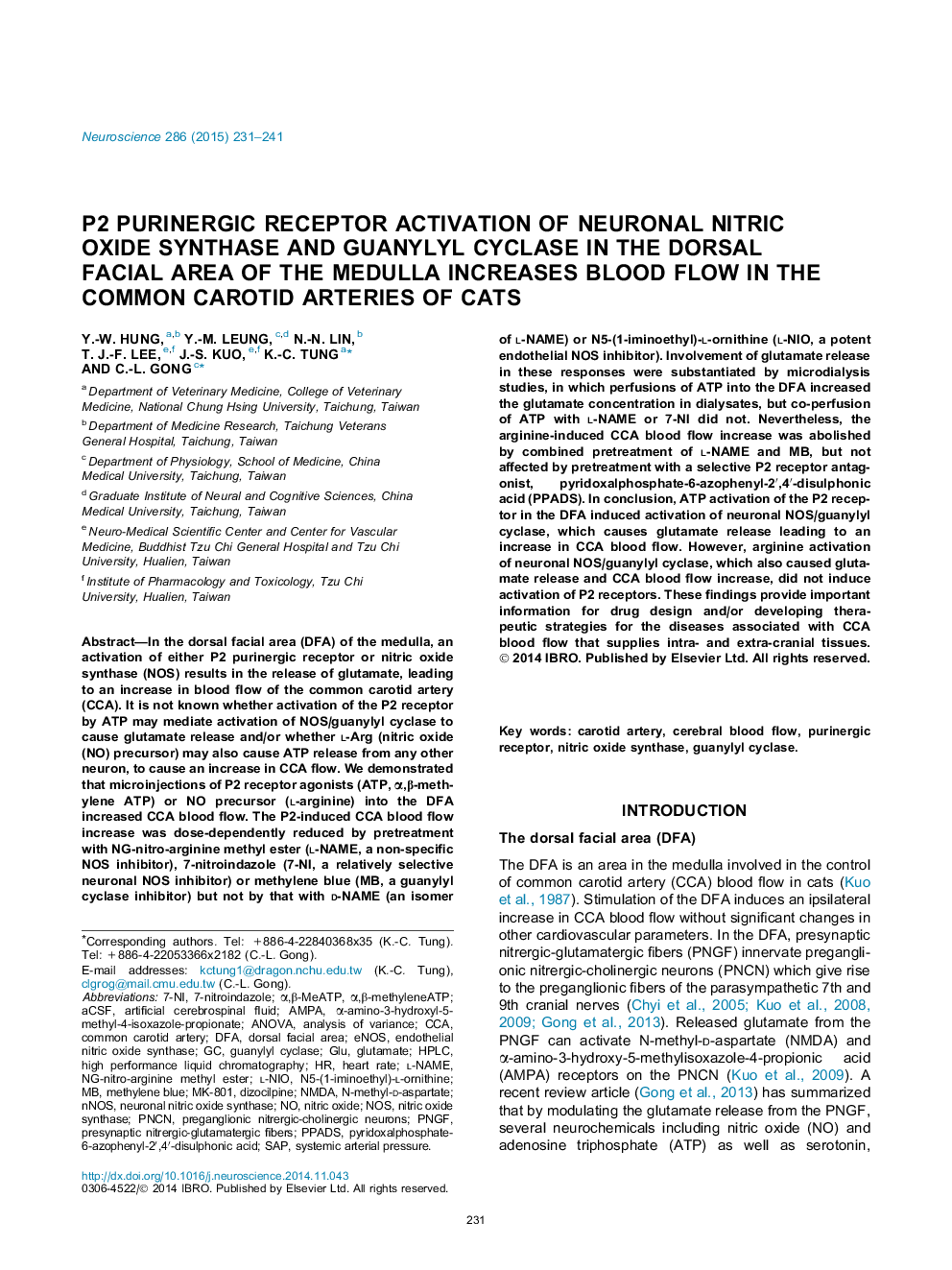| کد مقاله | کد نشریه | سال انتشار | مقاله انگلیسی | نسخه تمام متن |
|---|---|---|---|---|
| 6273106 | 1614790 | 2015 | 11 صفحه PDF | دانلود رایگان |

- In DFA, P2 agonist activates its receptor on PNGF that releases glutamate.
- Glutamate activates neuronal NOS/GC, resulting in increase of CCA blood flow.
- P2 agonist and NO precursor do not cause PNGF and other neurons to release ATP.
- There is no P2 receptor on PNCN.
- Cerebral vascular diseases may be related to poor regulation of DFA.
In the dorsal facial area (DFA) of the medulla, an activation of either P2 purinergic receptor or nitric oxide synthase (NOS) results in the release of glutamate, leading to an increase in blood flow of the common carotid artery (CCA). It is not known whether activation of the P2 receptor by ATP may mediate activation of NOS/guanylyl cyclase to cause glutamate release and/or whether l-Arg (nitric oxide (NO) precursor) may also cause ATP release from any other neuron, to cause an increase in CCA flow. We demonstrated that microinjections of P2 receptor agonists (ATP, α,β-methylene ATP) or NO precursor (l-arginine) into the DFA increased CCA blood flow. The P2-induced CCA blood flow increase was dose-dependently reduced by pretreatment with NG-nitro-arginine methyl ester (l-NAME, a non-specific NOS inhibitor), 7-nitroindazole (7-NI, a relatively selective neuronal NOS inhibitor) or methylene blue (MB, a guanylyl cyclase inhibitor) but not by that with d-NAME (an isomer of l-NAME) or N5-(1-iminoethyl)-l-ornithine (l-NIO, a potent endothelial NOS inhibitor). Involvement of glutamate release in these responses were substantiated by microdialysis studies, in which perfusions of ATP into the DFA increased the glutamate concentration in dialysates, but co-perfusion of ATP with l-NAME or 7-NI did not. Nevertheless, the arginine-induced CCA blood flow increase was abolished by combined pretreatment of l-NAME and MB, but not affected by pretreatment with a selective P2 receptor antagonist, pyridoxalphosphate-6-azophenyl-2â²,4â²-disulphonic acid (PPADS). In conclusion, ATP activation of the P2 receptor in the DFA induced activation of neuronal NOS/guanylyl cyclase, which causes glutamate release leading to an increase in CCA blood flow. However, arginine activation of neuronal NOS/guanylyl cyclase, which also caused glutamate release and CCA blood flow increase, did not induce activation of P2 receptors. These findings provide important information for drug design and/or developing therapeutic strategies for the diseases associated with CCA blood flow that supplies intra- and extra-cranial tissues.
Journal: Neuroscience - Volume 286, 12 February 2015, Pages 231-241